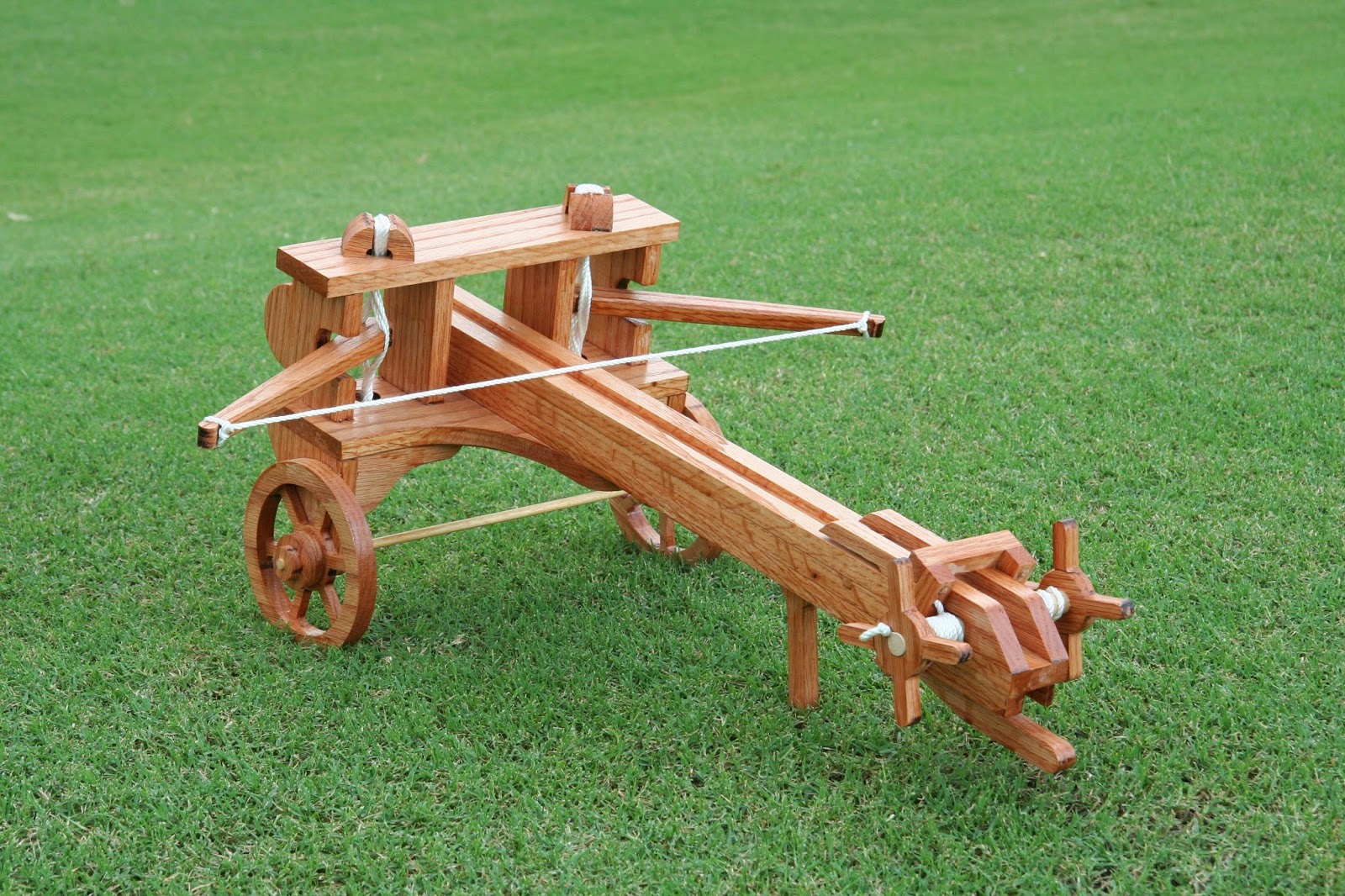The laws of Physics are upon us.
My experience with my catapult was actually quite hectic. I ran into many dead ends in the process.
My first model was very simple. It was nothing more than a plastic spoon taped to a mousetrap. To my surprise, it actually worked quite well, but I knew it could be better. So I adjusted the angle at which my projectile would be shot. This was a frustrating stage for me because whenever I got my projectile to travel far, I would tape my catapult in place. However, when I tested the taped catapult, the projectile either went at too steep of an angle or an angle that's not steep enough. Eventually, the model that ended up working the best was a flat, elevated base. This was surprising to me because I initially expected the best angle to be 45 degrees, but ultimately, that wasn't what worked best for me.
Thursday, October 2, 2014
History of Catapults
All things in existence have a story, and every story has a beginning. Though many attempt to forge the legendary start of a revolutionary story for their own entertainment, the truth that lies within the history of catapults is quite entertaining without any revision.
Catapults were originally created as warfare in the Middle Ages. As the enemy's castle walls of defense grew taller and stronger, a tool was needed to shoot hostile projectiles above or through the barricades. A device was invented and named catapult, a term derived from the Greek word "katapultos." A catapult was a large machine on wheels with a basket attached to a long arm and a source of power for hurling objects. The very first catapult ever was invented around 400 BC in Greece, and it was quite different than the catapults that we see and use today. In fact, it was more similar to a crossbow, both in the way it looked and functioned. It was called the Gastraphete.
Catapults were originally created as warfare in the Middle Ages. As the enemy's castle walls of defense grew taller and stronger, a tool was needed to shoot hostile projectiles above or through the barricades. A device was invented and named catapult, a term derived from the Greek word "katapultos." A catapult was a large machine on wheels with a basket attached to a long arm and a source of power for hurling objects. The very first catapult ever was invented around 400 BC in Greece, and it was quite different than the catapults that we see and use today. In fact, it was more similar to a crossbow, both in the way it looked and functioned. It was called the Gastraphete.
The Greeks were so pleased by the amount of damage that the Gastraphete caused that they assembled a bigger version of it. This was called a Ballista.
And finally, the trebuchet. A trebuchet is a form of a catapult, but it's dependent on a different power source: gravity.
In conclusion, catapults have clearly advanced with time, using one of four power sources: tension, torsion, traction, and gravity. Today, catapults vary in size, from a tiny toy catapult for small children to enormous weaponry catapults. Luckily, if it weren't for the ancient Greeks, we wouldn't have a device that has so many uses and purposes, whether it's being used to hurl flaming projectiles in battle, or being used for a science experiment, or simply being used exclusively for fun.
Subscribe to:
Comments (Atom)



